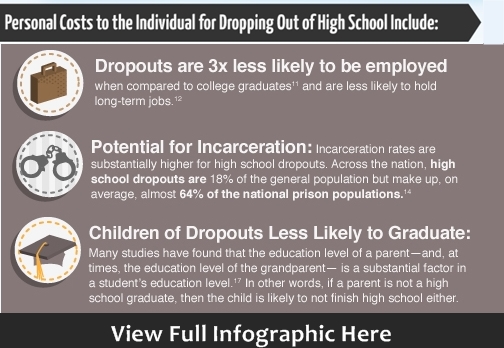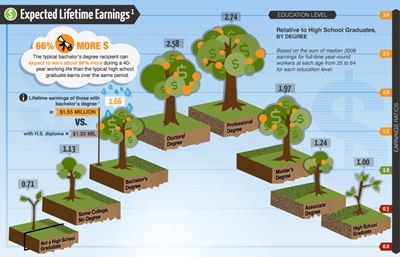Austin is growing and thriving. The city is consistently ranked among the best cities by magazines and has been named one of the world’s 30 most dynamic cities by The Atlantic and the nation’s No. 1 boom town by Forbes. We celebrate the creative, capable, innovative.
The fast-paced, exciting advances of our community are the very elements that could also keep us from connecting with the needs to improve our community.
Modern life provides so many obstacles: Maintaining our position as a creative mecca makes our lives hectic. Our idea of connecting with others often means checking Facebook and Twitter. We just don’t have time to get involved, and we don’t know how to get involved either. There are big problems that average people don’t know how to solve. How does my contribution add up to something greater? Is my contribution just a ripple in the pond?
The reality is that every contribution counts. Just ask the mother of a severely disabled child what she would do without the volunteers who show up at the bowling alley once a month and bring a smile to her daughter’s face.
Sadly, inaction can have a major impact, too. For example, at-risk teens who don’t have access to mentors and after-school programs are more likely to be unemployed or incarcerated, costing us millions in tax dollars and hurting society as a whole.
But we have some very creative organizations seeking to solve those challenges. Central Texas nonprofits are already geared up to connect volunteers with people in need. With their tried-and-true methods and professional partnerships, these organizations are able to identify problems, map out unique solutions and provide direction for those of us who want to help but just don’t know where to begin.
The Boys &Girls Clubs of the Austin Area and The Arc of the Capital Area are stepping up to meet critical needs among those who might otherwise fall through the cracks: at-risk youth and people with intellectual and developmental disabilities.
In doing so, these nonprofit organizations and their volunteers not only improve the quality of life of everyone involved, they create a more economically stable community, one in which people traditionally pushed to the fringe can become integrated, vibrant members.

![]() Boys & Girls Clubs of the Austin Area puts kids on a path to graduation
Boys & Girls Clubs of the Austin Area puts kids on a path to graduation
Providing direction and support to at-risk youth isn’t just some feel-good volunteer opportunity. At the Boys & Girls Clubs of the Austin Area, keeping kids on track to earn high school diplomas, find jobs and enroll in college means making a lasting social and economic impact on the community.
For more than a century, the mission of the Boys & Girls clubs has been to change lives and build a robust community.
We’ve been working with kids — most of whom come from difficult circumstances — for more than 100 years,” says CEO Mark Kiester. “The BGC ‘way’ works because it is simple, direct, tried and proven. We know how to use after school hours to teach kids the life skills they need to become productive, caring and responsible citizens.”
Academic success a foundation for growth
The national statistics have improved in recent years, but more than 1 million students still did not graduate high school in 2011, according to a report by Education Week and the Editorial Projects in Education Research Center.
The costs of dropouts mount in direct and indirect ways. High school dropouts are more likely to be incarcerated, with 64 percent of the country’s prisoners lacking a diploma. They are three times less likely to hold a job than college graduates. For just a single class, that translates to $30.7 billion in missed wages statewide. In Central Texas alone, it’s a loss of $425 million.
These are among the reasons BGCAA places such an emphasis on earning high school diplomas, and it shows. BGCAA, which serves 1,700 children daily, boasts a 97 percent graduation rate, compared to 76 percent in the Austin Independent School District. And Club members aren’t just squeaking by. They have a 15 percent higher overall GPA than their peers and significantly fewer absences.
BGCAA beats averages:
Nonprofit model for success
BGCAA is structured to deliver success in an efficient, effective way that individuals on their own cannot achieve.
“We aim to serve large numbers with huge proven impact very efficiently. That’s our model,” Kiester says.
Consider these numbers: Texas spends $70,000 up to $99,000 to keep a Texas juvenile offender in the system for one year. The annual cost of Club programs proven to deter juvenile crime? A mere $500 per kid.
 Reaching kids when they are most vulnerable is critical. During the hours of 3 to 6 p.m., teens, especially those lacking supervision, are more likely to engage in risky behavior. So BGCAA makes sure that kids have a safe haven where they can receive mentoring and support. Programs cover topics including nutrition and exercise education, Internet safety and self-esteem and character development. Learn more about BGCAA clubs>>
Reaching kids when they are most vulnerable is critical. During the hours of 3 to 6 p.m., teens, especially those lacking supervision, are more likely to engage in risky behavior. So BGCAA makes sure that kids have a safe haven where they can receive mentoring and support. Programs cover topics including nutrition and exercise education, Internet safety and self-esteem and character development. Learn more about BGCAA clubs>>
Partnerships are also a critical element of the BGCAA model, providing community wrap-around services to develop a complete child. BGCAA not only offers its own programs but also teams up with local organizations such as SafePlace, for a teenage healthy relationship program, AISD,as per a data share agreement, to academically case manage targeted youth and Sylvan Learning Center, for remedial education. Learn more about BGCAA partnerships>>
“Our partners are the lifeblood of our organization—everyone does their part to provide wrap-around services that are helping develop a complete child,” Kiester says. “We are the experts in youth development, but we know we’re not experts in everything. We rely on our partners to ensure quality experiences and amazing opportunities for our kids.”
The success of the BGCAA model shows in its graduation rates. But the overall impact of this work can be seen in the economic benefit it provides to the rest of the economy.
Passing the graduation milestone opens the door to college and greater financial prospects for individuals and for the community.
“For 100 years, the BGC model delivers success for our organizations and our students,” says Kiester. “And that success translates to the success of the whole community.“
Learn More about Boys & Girls Clubs
![]()
 The Arc of the Capital Area provides support to people with disabilities
The Arc of the Capital Area provides support to people with disabilities
As Executive Director of The Arc of the Capital Area, Susan Eason can tell you that an estimated 35,000 Central Texans have intellectual and developmental disabilities, that less than 20 percent of those people receive support and services and that the state of Texas ranks 49th in the country in health and human services funding.
But as the mother of one of those 35,000 — a 37-year-old daughter — Eason also can speak to the isolation, fatigue and desperation that caregivers feel as they struggle with the high cost of medical bills and specialized child care, the eight- to 10-year waiting lists for services and the knowledge that they must plan for the long term even as they barely meet day-to-day demands.
This is where The Arc can step in to steer families and individuals toward resources and programs that can help them cope and prepare for their future needs.
“A lot of families are hanging on by a thread, and to ask them to wait 10 years is really scary,” says Eason, who came to The Arc as a client 31 years ago, stayed on as a volunteer and eventually took the helm.
The Arc serves clients with a range of disabilities, including Down syndrome, autism and cerebral palsy, from birth to end of life. Often, the individuals with the greatest need are those who have aged out of the school system. About 80 percent of The Arc’s adult clients are unemployed. And as people with disabilities now have much longer life expectancies, they are starting to outlive their caregivers in greater numbers.
In 10 years, 50 percent of caregivers for people with disabilities will not be able to continue that care, according to The Arc.
Caregivers “are wondering who’s going to step in when they’re no longer able to do that care,” Eason says.
Some families, out of desperation, turn to the state’s institutional system, which costs Texas at least twice what it takes to care for an individual in a private or group home — a point Eason frequently hammers home with lawmakers.
The Arc aims to pull families out of isolation with events such as bowling and movie nights and to help people with disabilities become productive, engaged members of the community through employment and volunteer opportunities. Its art program, through which clients can make and sell their own work, has been particularly successful The nonprofit provides a host of services, including guardianship, parental support, case management, education and crisis assistance.
The Arc’s guardianship program helps under-resources families establish guardianship of children with development disabilities who have recently reach or will soo reach adulthood.
“One of the hardest issues for families is understanding and obtaining guardianship when their child with a disability turns 18,” says Eason. “The Arc assists families with this process and provides pro bono attorneys to families who qualify.”
Eason encourages Central Texans — even if they have no experience with disabilities — to get involved. Volunteers can participate in the organization’s bowling and movie nights or help out in the art studio. Employers can hire clients. Texans can petition their legislators to fund more services for people with disabilities.
The key, Eason says, is “recognizing that everyone is unique, and everyone has challenges. But these are people who deserve a life just like the rest of us do.”







